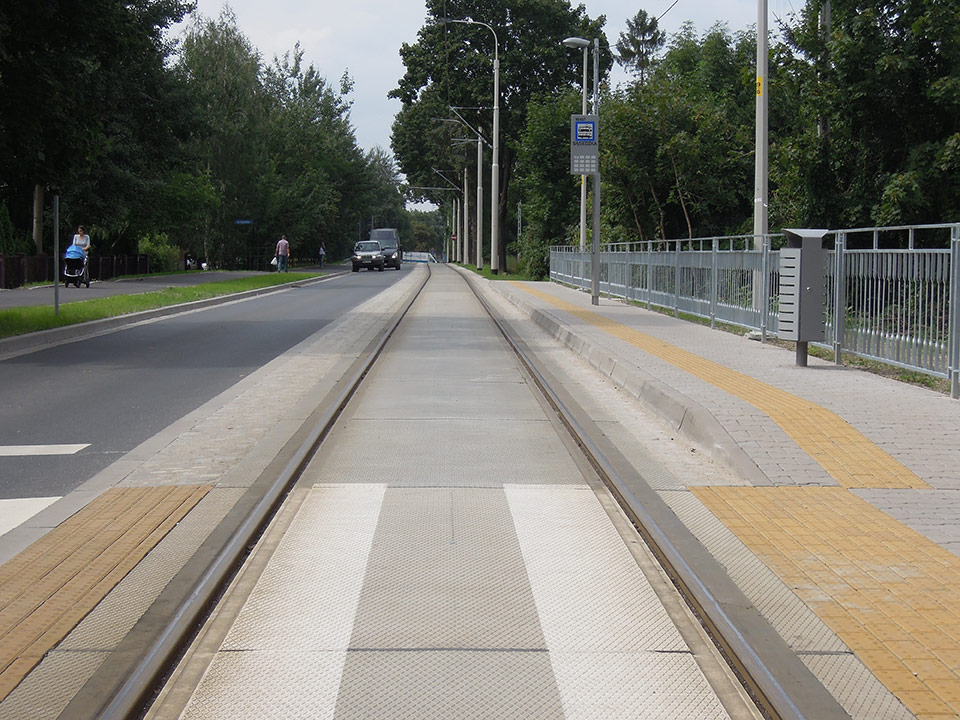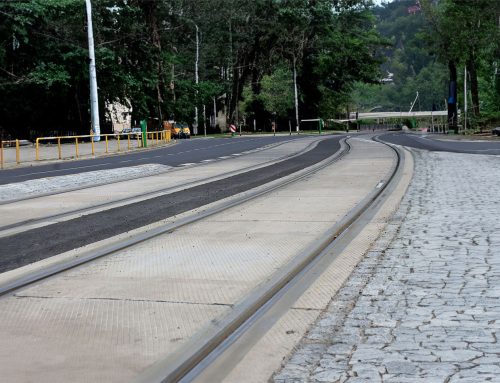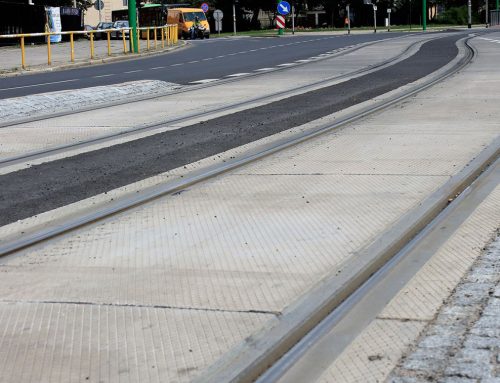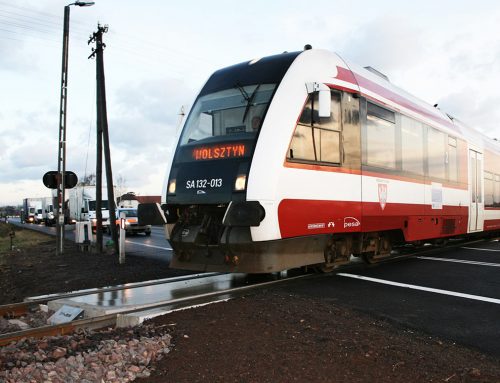The construction and renovation of tram tracks are an integral part of the modernization and maintenance of urban transport infrastructure. Effective and durable repairs require the use of modern technologies and materials that ensure the failure-free operation and safety of the tracks. Among such materials are polyurethane elastomers, which, thanks to their unique properties, are widely used in renovation works. This article examines the practical applications of polyurethane elastomers in tram track renovations and the benefits they provide.
What are polyurethane elastomers?
Polyurethane elastomers are polymeric materials with a wide range of applications. They are produced through gradual addition polymerization of compounds containing two or more hydroxyl (polyols) or amine groups with compounds containing isocyanate groups. Depending on the polymerization conditions, the types of products used, and auxiliary agents, the final product can be tailored to the required application and user expectations.
In railway track construction, they are used in continuous or point elastic rail fastening systems. They exhibit excellent adhesion to steel and concrete surfaces, creating durable bonds in rail fastening systems. Thanks to their elastic properties and unique formulation that allows operation under varying dynamic load conditions, they provide effective vibration isolation of these connections.
Advantages of elastomers in tram track renovations
1.Durability and Flexibility
These materials are highly durable and flexible, which compensates for vibrations and temperature changes, making the tracks more resistant to dynamic loads generated by tram traffic.
2.Noise and Vibration Reduction
One of the main issues related to tram traffic is vibration and noise. Polyurethane elastomers used in the track surface effectively dampen vibrations and reduce noise, improving acoustic comfort around the track. Vibration reduction also protects the track structure from mechanical damage.
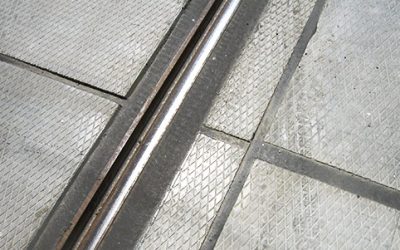
3.Resistance to weather conditions and chemicals
Polyurethane elastomers create a durable protective barrier that prevents the penetration of water and harmful chemical substances, such as road salt. This protects the tracks from corrosion and degradation, extending their service life and reducing maintenance costs.
4.Quick and easy application
Elastomers are easy to apply, allowing for rapid renovation work without the need for long-term track closures. This minimizes disruptions to tram traffic and enables efficient management of repairs.
Practical Applications of Elastomers in Tram Track Renovations
1.Filling expansion joints
Expansion joints are essential in tram track structures to allow for thermal movement compensation and to prevent cracking. Elastomers used for filling these joints provide flexibility and water resistance, protecting the track from damage caused by temperature and moisture changes.
2.Crack and void repair
During track operation, cracks and voids may appear in the surface. Using elastomers to repair these damages allows for the quick and effective restoration of track integrity. These materials create durable and flexible fillings, preventing further surface degradation.
3.Rail insulation
Polyurethane elastomers do not conduct electricity. They are used for the electrical insulation of rails, creating a flexible barrier that protects the track from the effects of stray currents.
4.Protection against water and chemicals
Water and chemicals can cause corrosion and degradation of building materials in tram tracks. Polyurethane elastomers protect the track structure from such damage, making the tracks more durable and less susceptible to adverse weather conditions.
Example of application: TINES® Polyrail Product Series
TINES® Polyrail Series: Elastic Polyurethane Elastomers
TINES® Polyrail is a range of modern elastomers specially designed for use in tram tracks. Products from the TINES® Polyrail series offer a range of benefits that contribute to increased durability and functionality of tram tracks.
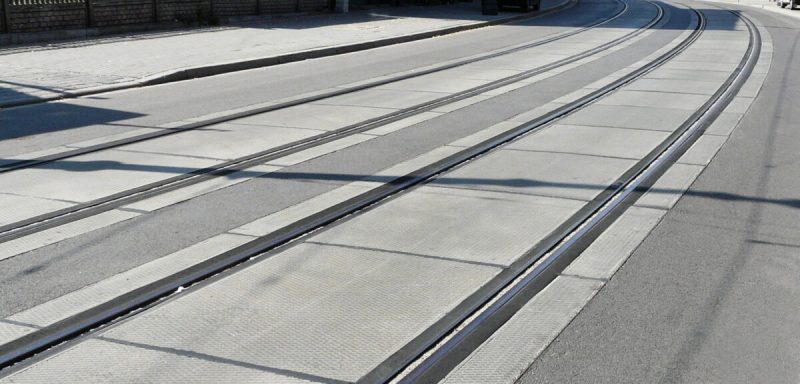
Noise and vibration reduction
TINES® Polyrail elastomers effectively reduce noise and vibrations generated by tram traffic. Thanks to the elastic properties of these materials, vibrations are efficiently dampened, reducing the noise level transmitted to the surroundings. This solution improves acoustic comfort for residents and users of public spaces.
Resistance to weather and chemicals
TINES® Polyrail materials are resistant to water, road salt, and other aggressive chemical substances. They create a durable protective barrier that prevents the degradation of the track structure. As a result, tracks are better protected against corrosion and other damages, extending their service life.
High flexibility and strength
TINES® Polyrail products are characterized by high flexibility, allowing for compensation of vibrations and temperature changes. Elastic connections ensure the structural integrity of the track, minimizing the risk of cracks and damage. This makes the tracks more resistant to dynamic loads generated by tram traffic.
Ease of application
TINES® Polyrail materials are easy to apply, allowing for quick execution of construction and renovation works. This minimizes disruptions to tram traffic, and the work can be completed efficiently and in a short time.
Summary
Polyurethane elastomers play an important role in the construction and renovation of tram tracks. Thanks to their elastic properties, they effectively reduce noise and vibrations. The use of modern materials, such as the TINES® Polyrail polyurethane elastomer series, contributes to the durability and reliability of tram infrastructure, which translates into better public transport quality and improved living comfort for residents.
Read also
Comprehensive construction solutions and ballastless track systems for railways, ensuring effective vibroacoustic insulation and a guarantee of durability for mainline tracks, engineering structures (bridges, viaducts, tunnels, and rail-road crossings).
A comprehensive offer of durable materials for the construction of tram tracks, allowing to reduce the level of vibrations and noise in the vicinity of the route.


